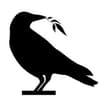Podcast
Questions and Answers
What does the numerator in the visual acuity measurement represent?
What does the numerator in the visual acuity measurement represent?
- The light sensitivity of the person being tested
- The distance at which the normal eye can see
- The angle of vision of the person being tested
- The distance at which the person being tested can see (correct)
A person with a visual acuity of 20/50 in one eye and 20/30 in the other, what is their overall visual acuity?
A person with a visual acuity of 20/50 in one eye and 20/30 in the other, what is their overall visual acuity?
- 20/40
- 20/25 (correct)
- 20/30
- 20/60
What is the term for normal vision?
What is the term for normal vision?
- Astigmatism
- Myopia
- Emmetropia (correct)
- Hyperopia
What type of lens can be used to correct myopia?
What type of lens can be used to correct myopia?
What is the term for the inability to distinguish between some colours?
What is the term for the inability to distinguish between some colours?
What is the main function of cones in the eye?
What is the main function of cones in the eye?
What is the purpose of the astigmatism vision test?
What is the purpose of the astigmatism vision test?
If your vision is 20/10, you have:
If your vision is 20/10, you have:
What is the function of the external ear structures?
What is the function of the external ear structures?
What is the name of the nerve responsible for transmitting sound impulses to the brain?
What is the name of the nerve responsible for transmitting sound impulses to the brain?
What type of deafness is characterized by a problem with the inner ear or the auditory nerve?
What type of deafness is characterized by a problem with the inner ear or the auditory nerve?
What is the name of the test used to detect conduction deafness?
What is the name of the test used to detect conduction deafness?
What is the name of the organ that detects equilibrium?
What is the name of the organ that detects equilibrium?
What is the term for the involuntary movement of the eyes during rotational testing?
What is the term for the involuntary movement of the eyes during rotational testing?
What is the purpose of the ossicles in the middle ear?
What is the purpose of the ossicles in the middle ear?
What is the term for the loss of hearing?
What is the term for the loss of hearing?
What is the purpose of testing visual acuity?
What is the purpose of testing visual acuity?
What is the distance used as a standard for testing visual acuity?
What is the distance used as a standard for testing visual acuity?
What is the term for the process of the eye adjusting its focus?
What is the term for the process of the eye adjusting its focus?
What is the significance of the 20 line on the Snellen chart?
What is the significance of the 20 line on the Snellen chart?
What do the numbers on the Snellen chart represent?
What do the numbers on the Snellen chart represent?
What is the term for the sharpness of vision?
What is the term for the sharpness of vision?
Why is the distance of 20 feet used for testing visual acuity?
Why is the distance of 20 feet used for testing visual acuity?
What does a visual acuity of 20/40 mean?
What does a visual acuity of 20/40 mean?
Where are the receptors for the sense of smell located?
Where are the receptors for the sense of smell located?
What is the purpose of the mucous membranes and cilia in the nasal passages?
What is the purpose of the mucous membranes and cilia in the nasal passages?
What happens to the sense of smell when someone has a cold?
What happens to the sense of smell when someone has a cold?
What is the purpose of the exercise involving smelling samples with eyes closed?
What is the purpose of the exercise involving smelling samples with eyes closed?
What is measured in the procedure for accommodation?
What is measured in the procedure for accommodation?
What is the purpose of gradually bringing the object toward the eye in the procedure for accommodation?
What is the purpose of gradually bringing the object toward the eye in the procedure for accommodation?
What is the outcome when the object is brought too close to the eye in the procedure for accommodation?
What is the outcome when the object is brought too close to the eye in the procedure for accommodation?
What is the purpose of using a ruler in the procedure for accommodation?
What is the purpose of using a ruler in the procedure for accommodation?
Flashcards are hidden until you start studying
Study Notes
Olfactory Discrimination
- Receptors for the sense of smell are located in the olfactory cleft, between the median septum and the superior turbinate in the nose.
- Olfactory nerves pass through the cribiform plate of the ethmoid and into the olfactory bulbs.
- Nasal passages are lined with mucous membranes and cilia, which moisten and warm the air during breathing.
- A cold can impair the sense of smell by causing membranes to swell and secrete excessive mucus.
Vision
Accommodation
- The near point of vision is the distance at which an object appears blurred or doubled.
- The eye's ability to focus on objects at varying distances is called accommodation.
Visual Acuity
- Visual acuity is the sharpness of vision.
- The Snellen chart is used to test visual acuity.
- The chart has lines with designated numbers, ranging from 200 to 10.
- Normal vision is 20/20, and the numbers indicate the distance at which a person can see an object clearly.
Astigmatism
- Astigmatism can be detected by staring at a grid pattern and seeing if one set of lines appears darker than the others.
Color Vision
- Color blindness is the inability to distinguish between certain colors.
- There are three types of cones in the eye: blue, green, and red.
- Cones provide color vision and high visual acuity.
Hearing and Equilibrium
Hearing
- The ear consists of the external, middle, and inner ear.
- The external ear gathers sound waves and directs them to the eardrum.
- The ossicles in the middle ear transmit and amplify sound waves to the inner ear.
- The hearing receptors in the inner ear stimulate nerve impulses that are interpreted in the auditory cortex of the brain.
Equilibrium
- The organ that detects equilibrium is the vestibular apparatus.
- Rotational nystagmus is a test used to assess equilibrium.
- The test involves rotating the body while keeping the head still, and observing the eye movements.
Studying That Suits You
Use AI to generate personalized quizzes and flashcards to suit your learning preferences.





